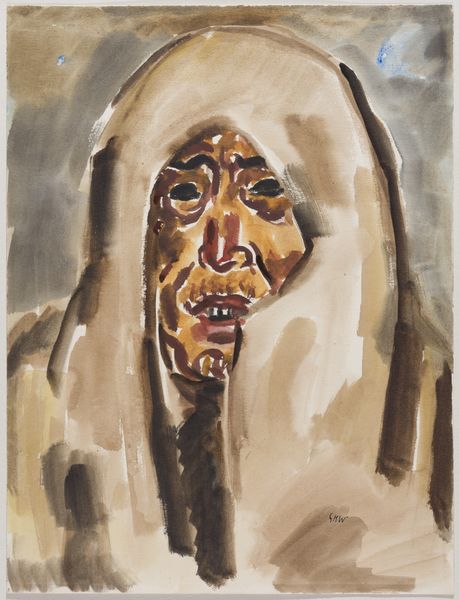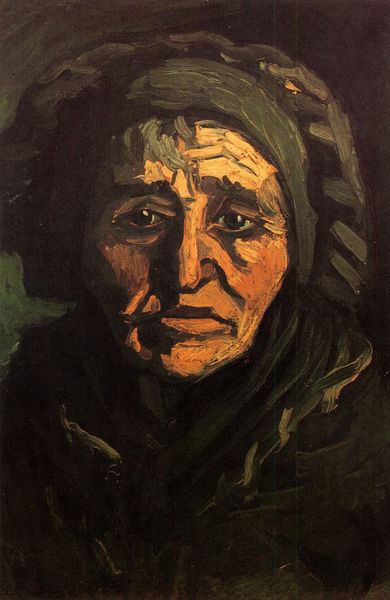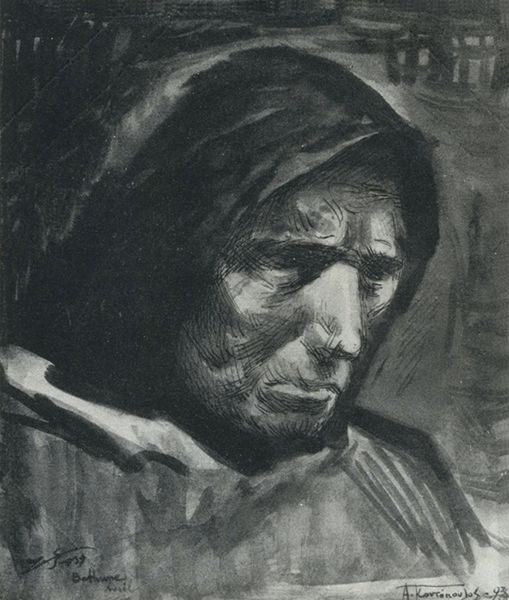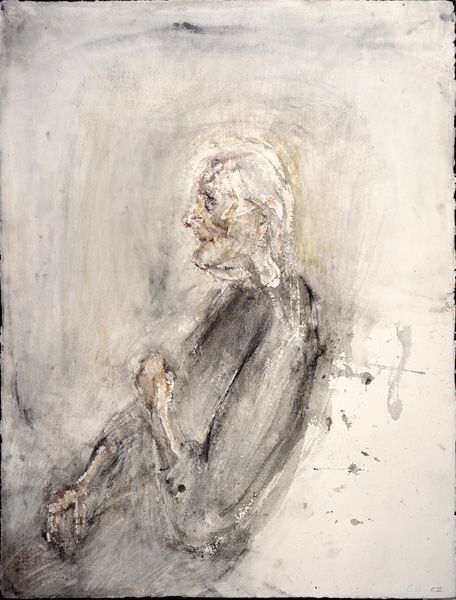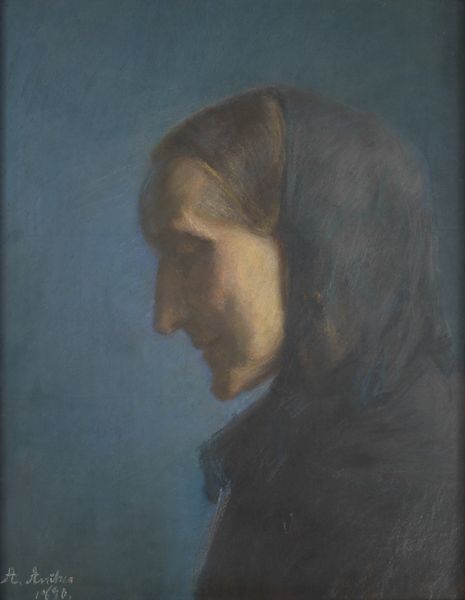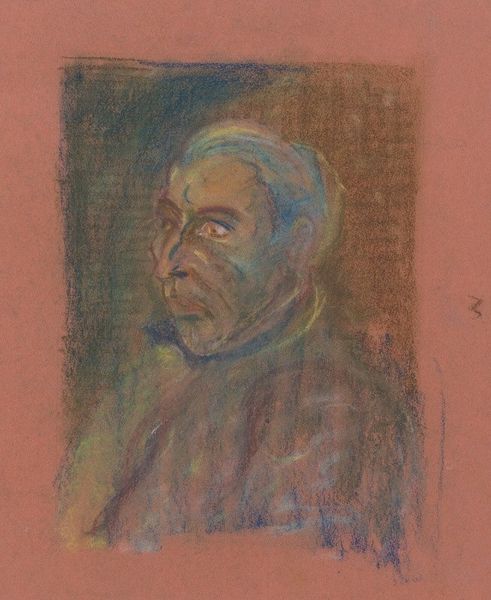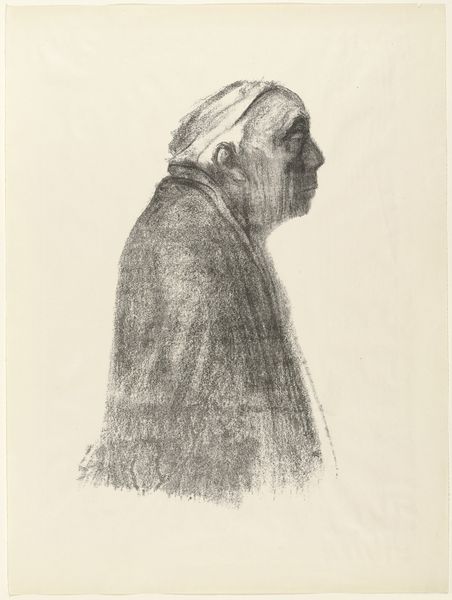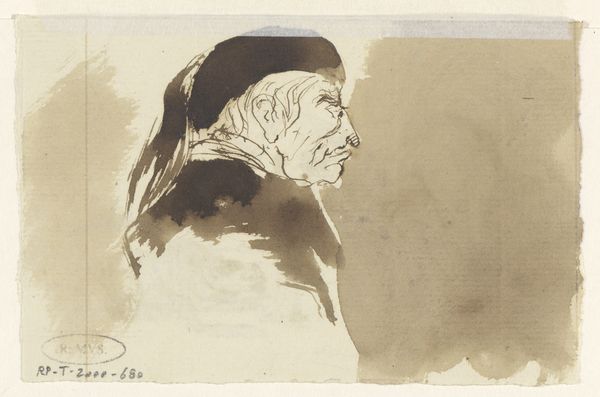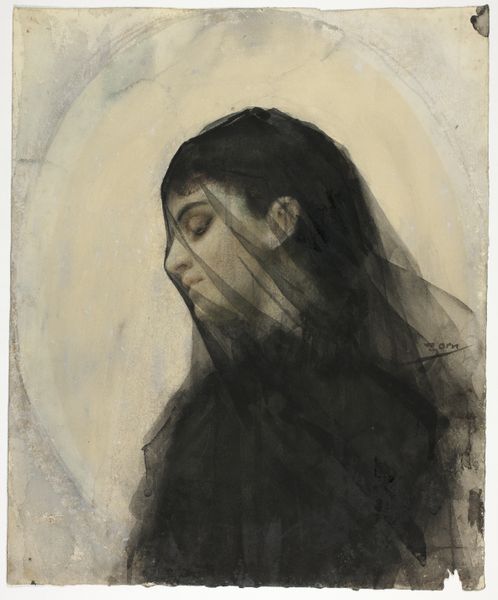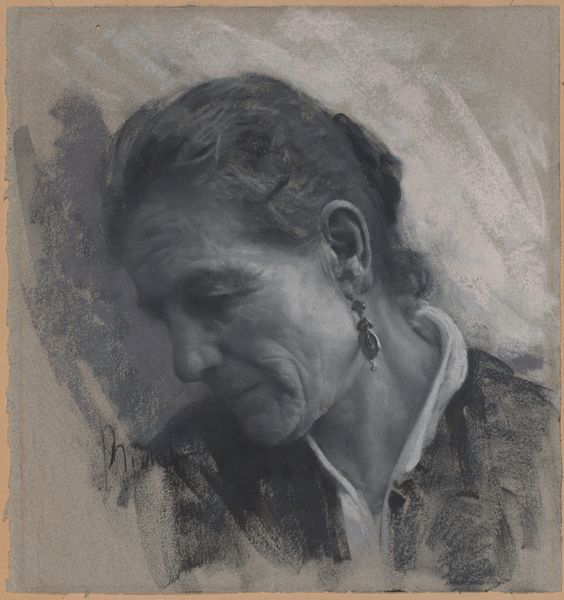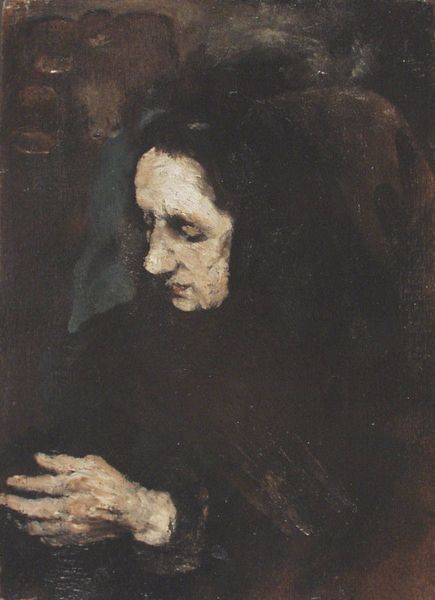
drawing, charcoal
#
portrait
#
drawing
#
self-portrait
#
charcoal drawing
#
possibly oil pastel
#
charcoal art
#
expressionism
#
portrait drawing
#
charcoal
Copyright: Public domain
Editor: Albin Egger-Lienz's "Frauenkopf," created in 1902, is a stunning charcoal drawing. There's a somber, almost haunting quality to the portrait, and the heavy use of charcoal gives it a beautiful depth. What visual symbols or cultural memories do you see surfacing here? Curator: The veil is a central element here. It acts as both a literal covering and a symbolic one. Think about what a veil has historically represented: mourning, piety, but also secrecy, a hiding of the self. It is darkness but at the same time could be something offering safety and solace. Do you notice how her face is illuminated in contrast? Editor: Yes, there’s a definite contrast. So the veil could symbolize multiple conflicting ideas? Curator: Precisely. That dichotomy is key to understanding its psychological weight. Notice her averted gaze, her pursed lips, and the lines etched onto her face. These convey a sense of weariness, perhaps even suppressed grief. The averted gaze speaks volumes, inviting viewers to contemplate on what she has endured. The charcoal, used so intensely, emphasizes these emotions. Editor: So the medium itself contributes to the message? Curator: Absolutely. Charcoal’s inherent darkness mirrors the sitter's perceived emotional state, the visual weight of the darkness emphasizes something profound that cannot easily be put into words. In essence, Egger-Lienz captures not just a likeness but also a powerful sense of unspoken history, something collectively familiar. Editor: This has completely changed how I perceive the portrait, there is something sacred and hidden in this image, something for me to connect with. Thanks for opening my eyes to all that. Curator: My pleasure! Understanding art lies in uncovering its layers of meaning, symbol by symbol, mark by mark.
Comments
No comments
Be the first to comment and join the conversation on the ultimate creative platform.
